“I came looking for Nadav’s sweatshirt and hat. I stayed because I felt close to him—as if I could live through what he lived through,” Hedva Biton from Ofakim told JNS at the “Nova 6.29” exhibit in Tel Aviv on Monday.
Biton’s 20-year-old son Nadav was shot in the head by terrorists on Oct. 7 at a music festival as he went looking for help after digging a hole in the ground to hide his friend who could not run. Nadav was ambushed and murdered in cold blood by Hamas terrorists.
On that day, Hamas terrorists murdered 1,200 people, mutilating some, burning others beyond recognition. Nearly a third were killed at the Supernova music festival near Kibbutz Be’eri in southwestern Israel facing the Gaza Strip.
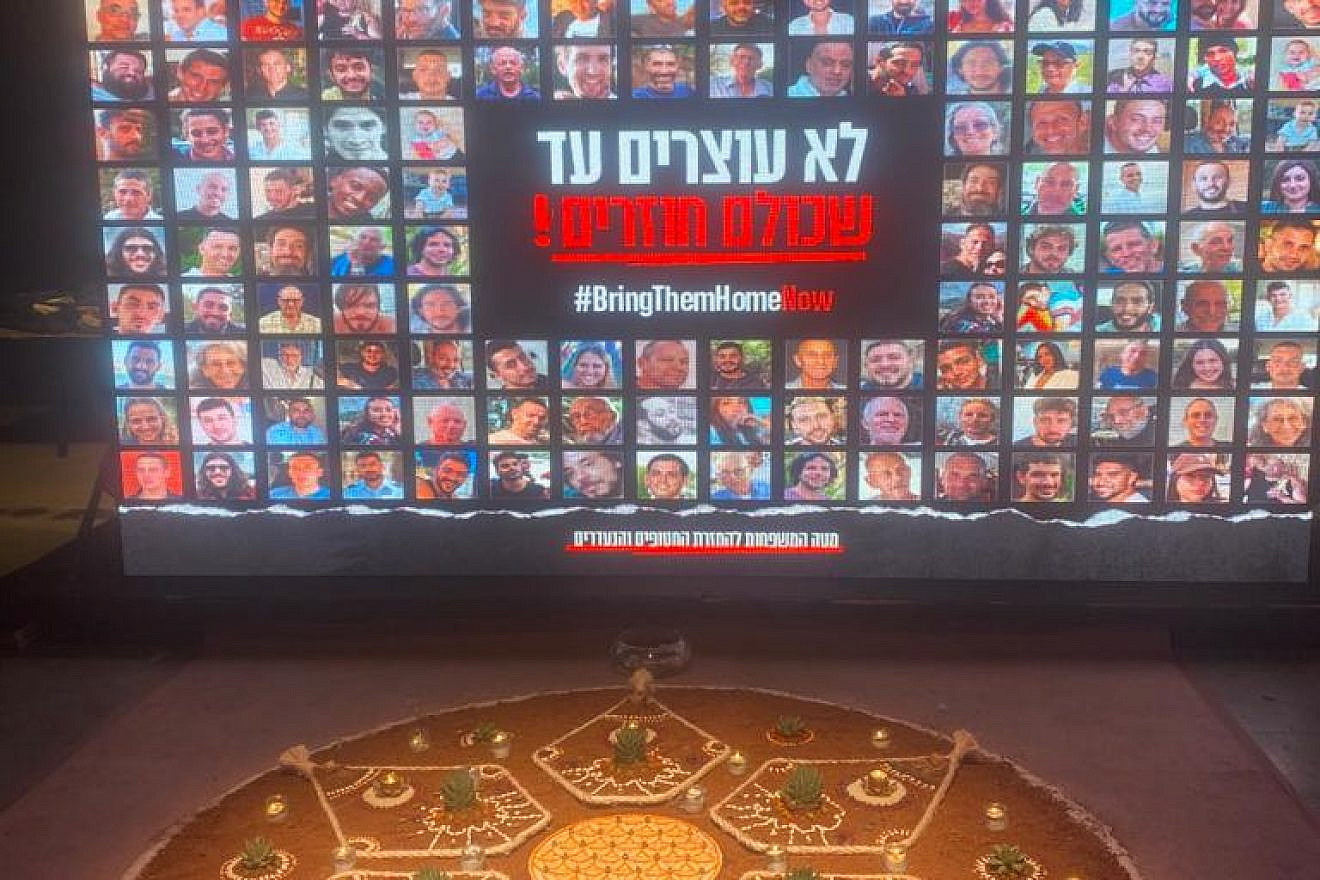
Biton searched the lost-and-found section of the “Nova 6.29” exhibit at the Tel Aviv Expo in vain to find her son’s belongings. She stayed on, visiting each section to pay tribute to him. The exhibit is named after the exact time on Oct. 7 when the rockets began falling on the Tribe of Nova desert rave. More than 3,000 people were at the festival, that began on Friday night, Oct. 6, and was meant to last into the next afternoon.
The exhibition’s therapeutic effect is precisely what one of its organizers, Raz Malka, 27, from Tel Aviv, sought when he joined the initiative. “We are focused on helping our people, who took a very hard punch in the stomach two and a half months ago,” Raz said.
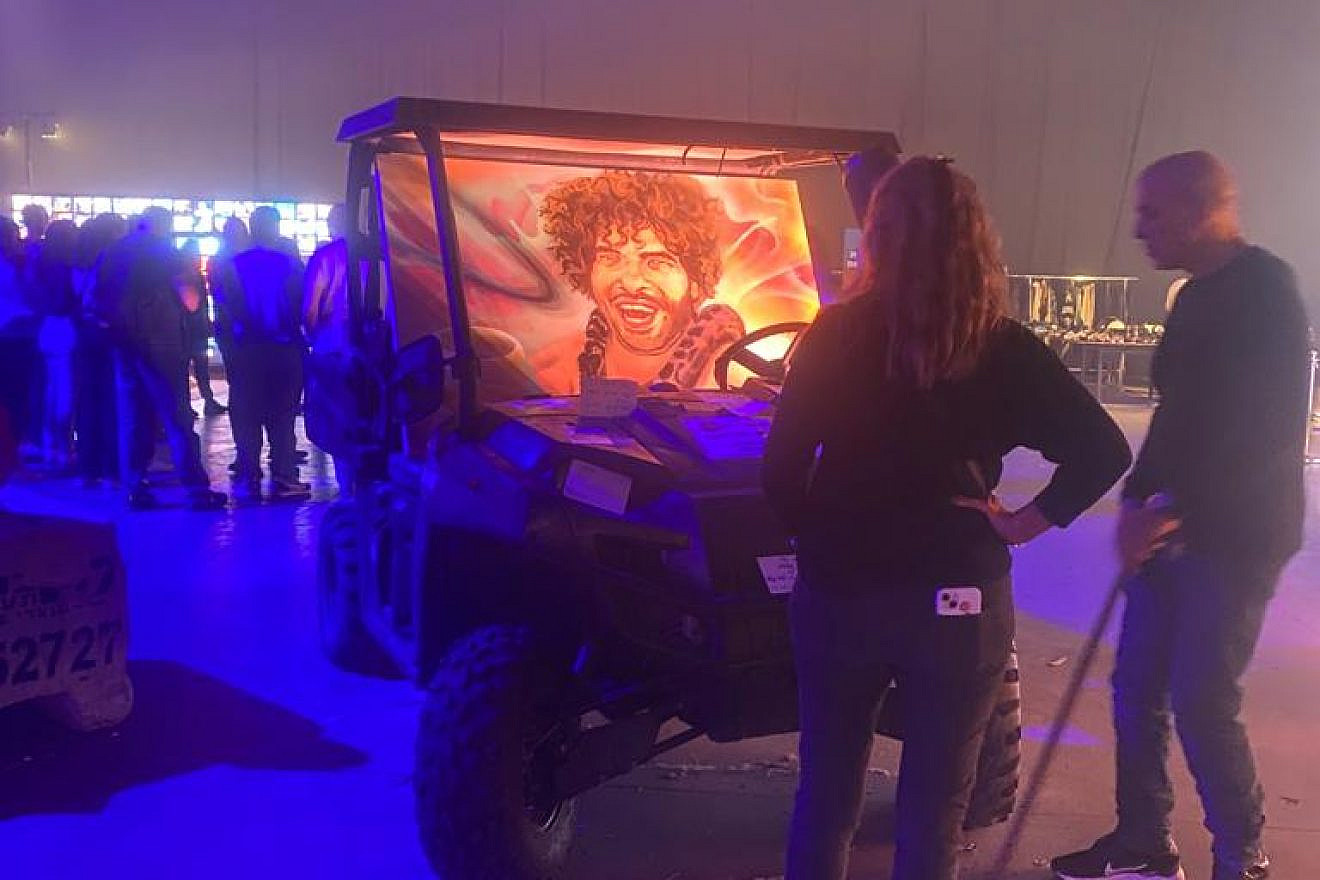
“We see people who attended the Supernova festival come here, after they’ve recovered, or while they are recovering; as well as families of those who were massacred. Some ask us for help and, often, we are able to help them,” he added.
The organizers are all survivors of the massacre. The exhibit is their way to work through their grief and move onward.
“The two days that followed the attacks were extremely difficult. Some of us stayed and fought the terrorists, others helped people escape and get to hospitals,” said Raz.
Visitors to the exhibition find themselves in a camping area permeated with an earthy, dimly-lit atmosphere, smelling of incense and with trance music in the background. Blankets are strewn around, here and there a flip-flop sandal left behind, or an abandoned teddy bear. Photos of victims are displayed on chairs.
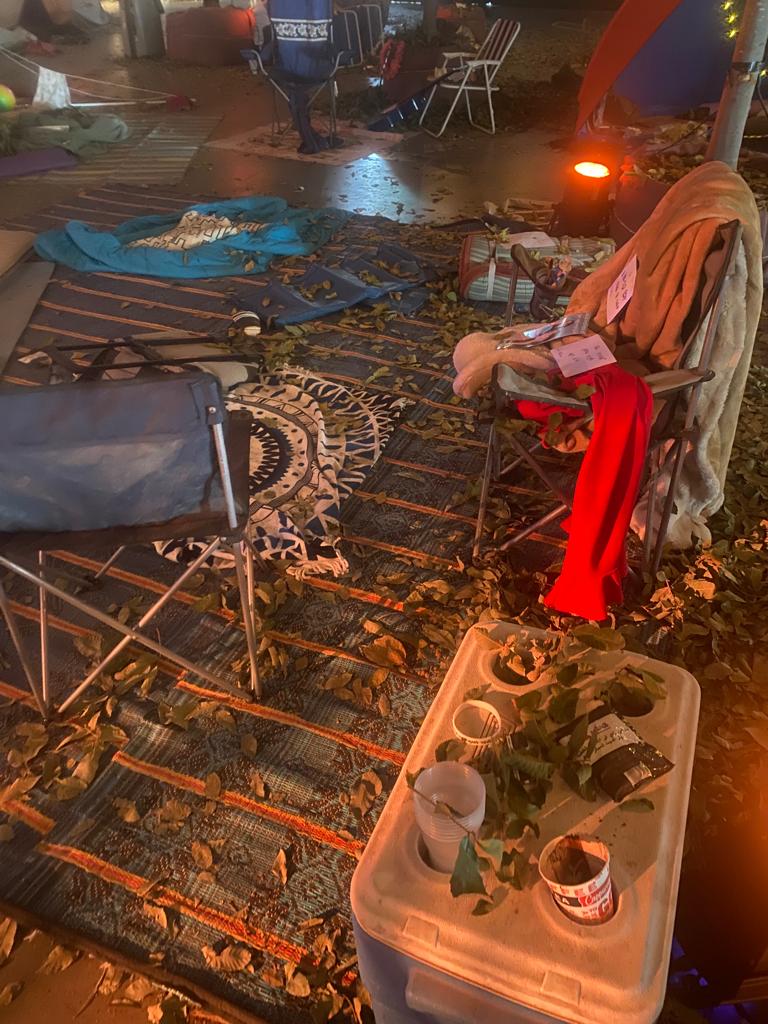
As one approaches the stage, the music switches to Israel’s national anthem, “Hatikvah,” Footage of dancing revelers and DJs appears on screens, the footage taken just hours before Hamas launched an assault that would claim the lives of some 364 attendees.
“The smell of incense, the temperature, the music playing in the background. It’s eerie. You feel as if they recreated the site and you are experiencing it,” Elan Bortniker, 33, a school teacher from New York who came to Israel on an organized trip, told JNS at the exhibit.
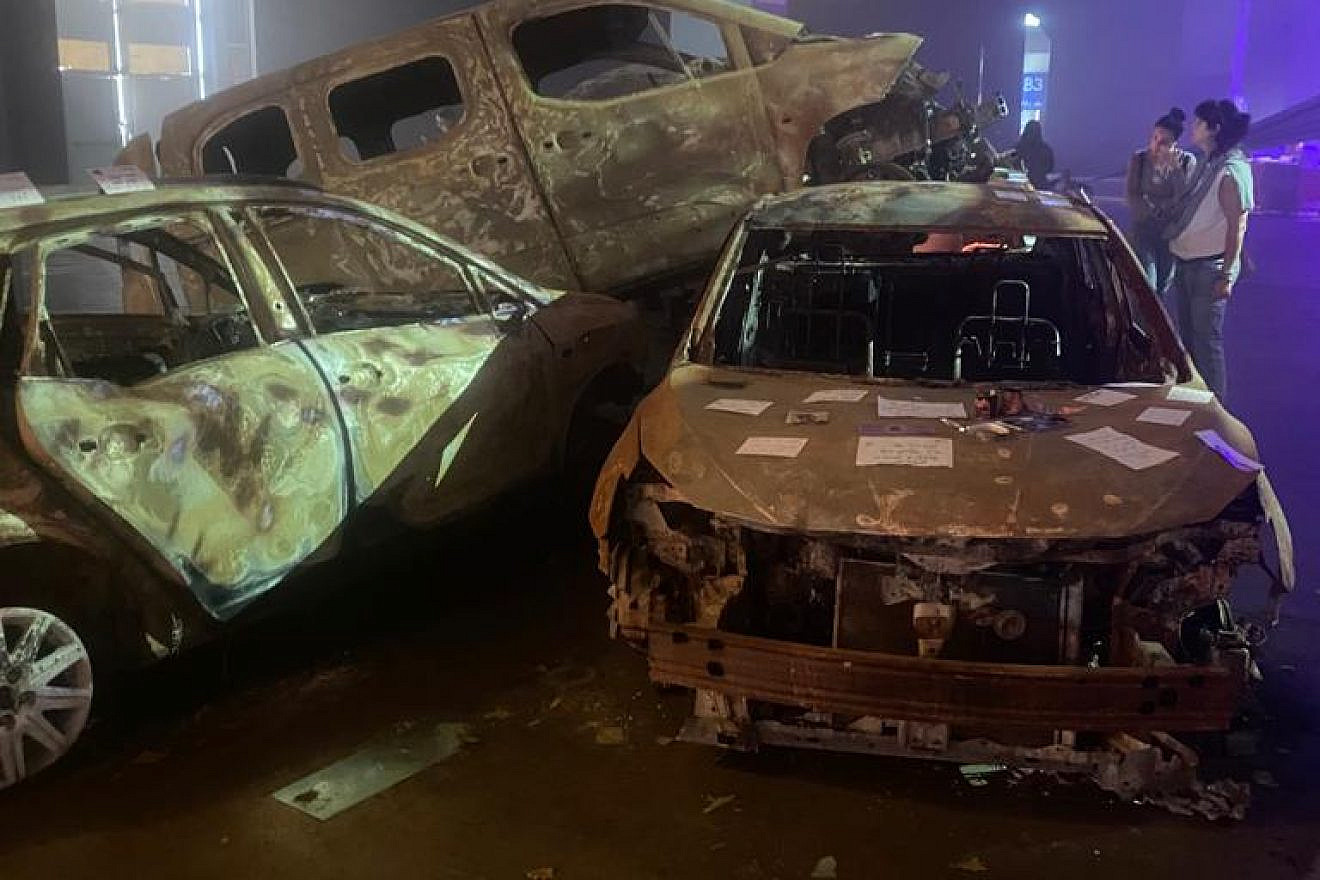
“There are burnt-out cars and bullet-riddled portable toilets. Everything is authentic from the festival. It is the worst juxtaposition of peace, love and freedom—confronted with an armed brigade of gunmen slaughtering and raping people. It’s the most difficult thing to think about. This exhibit brings some light to what the participants stood for—peace, positivity and happiness,” he added.
Personal items collected at the scene were placed on tables; these included makeup, phone covers, water bottles, shoes and pieces of clothing.
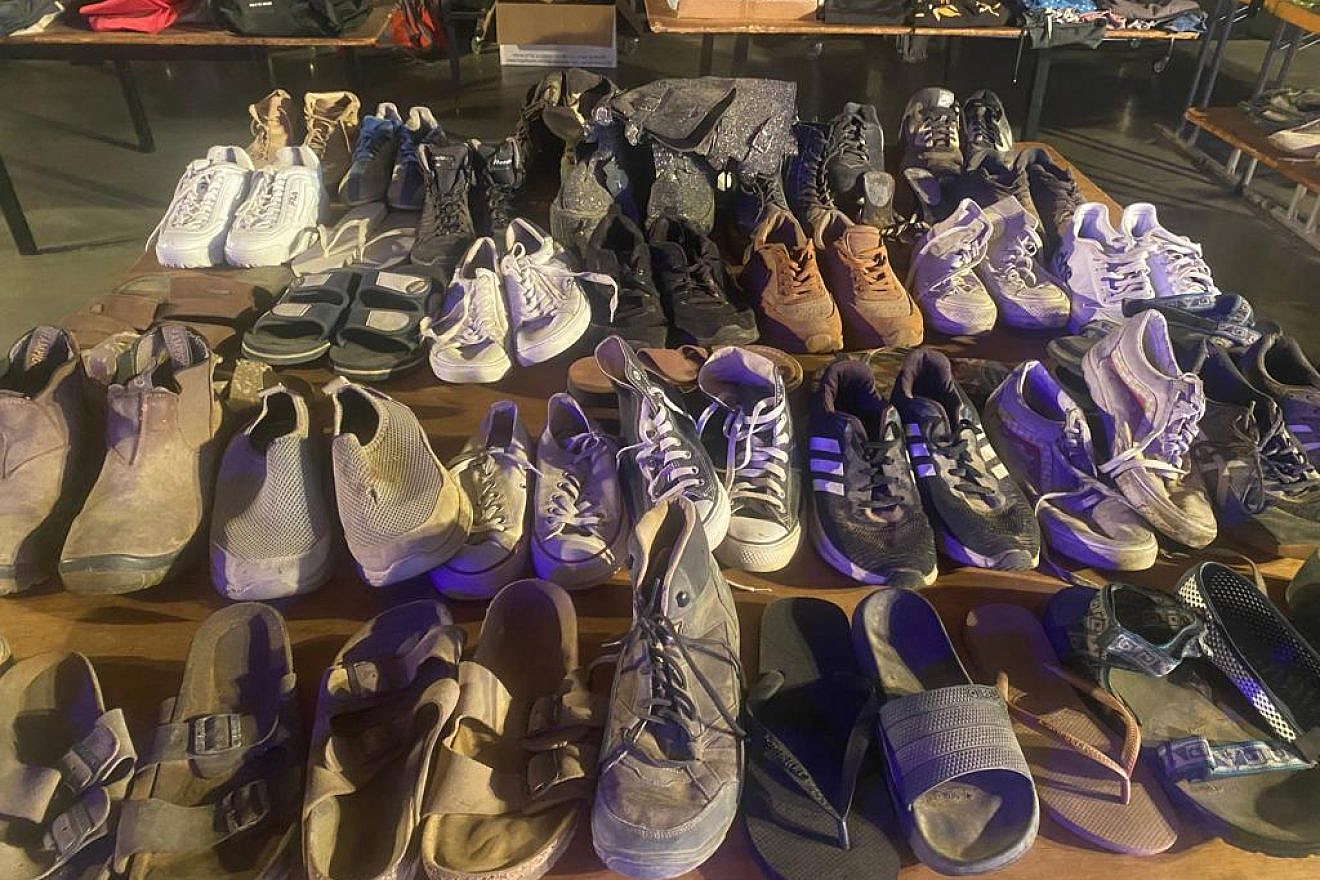
“We listen to the stories when people come to either find their own personal items; or when families come looking for the belongings of their loved ones,” Yael, 61, from Tel Mond, a volunteer at the lost-and-found section, told JNS.
“Families come every day and it fills the heart when they’re able to find what they were looking for. We feel that we’ve succeeded,” she said.
Credit cards and phones, which were retrieved from the scene of the deadly attack by soldiers and police, were returned to their owners or the next of kin.
All the proceeds from the exhibit, mostly donations and funds collected from remembrance items sold at the entrance of the exhibit, go to supporting Nova survivors, through therapy or whatever other method necessary.
“Some of them feel like they lost their lives. Some of them hid under bodies for hours, others ran from bullets. It’s hard to recover from this. We are determined that we won’t stop until we’ve helped everyone we can help,” said Raz.
In the upcoming months, the organizers will be taking the exhibit overseas, starting in the United States and continuing through Europe.
Israel’s Yes Studios joined the effort of revealing Hamas’s atrocities to the world by offering its #NOVA documentary to all Israeli outlets for free, and the company is working on international distribution. The nearly one-hour documentary, comprising first-hand video and audio footage from the music festival massacre, has become the most viewed film in the history of the Yes Studios.
So far, three Israeli baby girls have been named Nova, in memory of the victims.


























